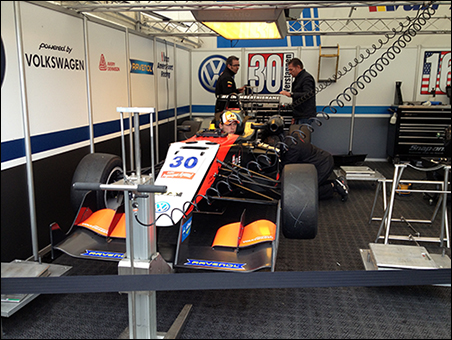Written in honour of Max Verstappen’s first F1 victory.
I’ve known of the existence of Max Verstappen for a very long time. When I first started watching formula 1, internet was only available via dial-up modem and very expensive. So instead of allowing me access to our costly home connection, every two weeks my father would use his office network to print out the latest articles of the only formula 1-website he knew of. The first batch of papers he ever handed me was topped by a piece titled “Verstappen becomes father for the first time”. It was illustrated with a photo of Jos, his then-wife, and baby Max Emilian, born only a few hours earlier.
As the years passed, toddler Max once made the news for breaking his wrist while playing. A few years later, word started coming out of the go-kart world that a now teenaged Max was getting good results and was building a fierce rivalry with fellow Dutchman Nyck de Vries. At the time there were many questions being asked about which of the two had the most talent. For a long time the debate went in favour of De Vries, especially when he was the first to make the switch to cars. Many at the time wondered if Max, when he too switched to cars, would still be able to catch up with the by then much more experienced De Vries.
Verstappen made his move from go-karts to cars a year later, in the winter of 2013-2014. He competed in the Florida Winter Series and then tested some Formula Renault 2.0 cars. Like most, I expected Max to sign up for one of the 2.0 series – it’s a good starting point for rookies – but instead he was announced as a Formula 3-racer for Van Amersfoort Racing. When I heard, I was certain Frits van Amersfoort had lost his mind. Who puts a practically inexperienced boy in heavy machinery like that?!
My opinion about VAR’s Verstappen project didn’t improve much upon seeing it live for the first time. When I stumbled into the Formula 3-paddock at the Hockenheimring in May 2014, it didn’t prove difficult to spot the VAR tent. In fact, it was almost impossible to miss it. It was the only tent with fifteen spectators in front of it, all dressed in orange, with Jos Verstappen-caps and Dutch flags. Grumbling I walked past the canopy. I refused to be in awe of a driver simply because of his last name. As far as I was concerned, Max would have to prove himself first.

During the first free practice, he failed to do that. I was watching from the inside of the Motodrome, from where I had a good view of how strangely Max was handling the Sachskurve. He literally took a new line every lap. So, I quickly pegged him down as a nutter. This was an opinion I stuck with even after Max had finally found his preferred line and, over the course of the weekend, began bringing his lap times down drastically. The races on Saturday and Sunday only made things worse. In the first race Max retired, in the second he broke down on his way to the grid and very clumsily parked his car at the Spitskehre, and in the third one… okay, fine, he won that one. But hey, that was probably just dumb luck. After that first weekend in Hockenheim, I saw absolutely no reason to hype up ‘this Verstappen boy’. On the way home, I even remember stating: “The kid still has an awful lot to learn and I doubt he’ll ever be as good as his father was. If he wants to prove me wrong, he’s going to have to step up his game BIG TIME.”
Well, he did.

